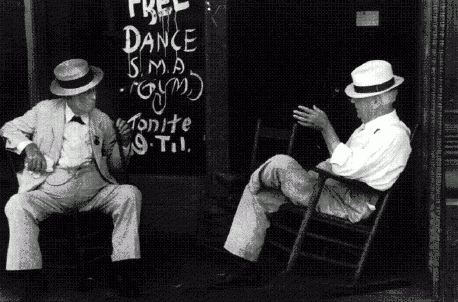Oh, this is good. The wonderful Letters of Note site has published a book.
The Big Crowd
Our pal Kevin Baker’s new novel, The Big Crowd, was reviewed by Scott Turow yesterday in the Times:
The novel succeeds in creating a compelling imagined world. Most of the telling is through dialogue, and Baker’s re-creation of the cadences and diction of another time is impressive. Charlie is described as “a jake guy,” while Toots Shor says of a bet he’d like to make, “I could use the kale.” In anger, Tom barks “Nuts,” rather than the coarser language of today. And the hit men have the colorful nicknames of bygone times: Kid Twist, Cockeye Dunn, Tick-Tock Tannenbaum.
Best of all, the novel delivers on what the title promises, a detailed rendering of the relationships within that era’s power cabal. “A city like New York,” Charlie tells Tom, “it’s got to have great men — not good men — to run it. . . . We’re held together against the chaos by the grip of a few strong men, that’s all.” Baker offers a vast array of secondary characters — cops and thugs, politicians, bureaucrats, clergymen, bosses and hangers-on — who grow increasingly vivid as they appear and reappear in the gradual recounting of various incidents, like the murder of Peter Panto, an upstart organizer on the docks. Actual historical figures, including Robert Moses and Cardinal Spellman, are served up unsparingly.
I’ve read few other novels that portray in such a nuanced way the temptations of power, the complex division of control in a great metropolis and the perils of political deal-making in that environment. Baker doesn’t like the Big Crowd any more than Tom O’Kane does, but, fortunately for us, he understands its workings very well.
[Photo Credit: Mark Nadir]
Talkin’ the Talk
Over at the New Yorker, Anthony Lane delivers the finest tribute to Dutch Leonard that I’ve come across so far:
Once you hear the Dutch accent you can’t get it out of your head, and for innumerable readers it became a siren song. I fell prey to it in the mid-eighties. Leonard had a breakout, with “Glitz” (1985), and it led many of us to raid the back catalogue with glee. Some of the books weren’t easy to get hold of, and the hunt only sharpened our zeal. A friend and I ravened through whatever we could lay hands on; there is a strange, barely sane satisfaction in happening upon an author—or a painter or a band—and making it your mission to consume everything that he, she, or they ever produced. You rarely succeed, yet the urge for completeness is a kind of love, doomed to be outgrown but not forgotten. I have often pursued the dead in that fashion, but Leonard may be the only living writer who spurred me to such a cause.
…One proof of literary genius, we might say, is a democratic generosity toward your mother tongue—the conviction that every part or particle of speech, be it e’er so humble, can be put to fruitful use. If that means trimming the indefinite article, leaving us with a Albanian and a oyster, so be it. Nothing need go to waste. Richard again, aiming at the formal locutions of a police report, and missing by yards: “I cruised the street and the street back of the residence, the residence being dark, not any light on, but which didn’t mean anything.” So much dumb-ass delusion in so little space, and the linguistic shortfall squares with an overriding sense, throughout the novels, that our grip on the world—and this goes for all of us, not just the chancers and the thugs—is never as secure or as enduring as we would like. Marriages crack like plates; one side of the tracks has no concept of life on the other side, though it may harbor a risky desire to find out; and words will not stay still. That is why the movies inspired by Leonard’s fiction (a slew of disasters plus the odd success, like “Get Shorty,” “Out of Sight,” and “Jackie Brown,” which was based on “Rum Punch”) struggle to match his equilibrium. The souls that he surveyed, even when they were played by George Clooney and John Travolta, were unquiet and fairly uncool. Leonard’s gaze was cool, but, in all honesty, it belonged in a book.
I’m curious what Leonard’s reputation will be in 40-50 years. He sold a lot of books in his time but was also a critical darling. Not many writers enjoy both kinds of success but he sure did.
[Photo Credit: AP]
Agee’s Hidden Treasure
Here’s John Jeremiah Sullivan on James Agee’s Cotton Tenants, a previously unpublished magazine story that would later turn into Agee’s acclaimed book, Let Us Now Praise Famous Men:
BEFORE THE FAMOUS BOOK, there was the essay, the thing Agee and Evans were sent to Alabama for in the first place. It never got published. Agee wrote it at least twenty thousand words longer than Fortune wanted; he turned it in late; the rubric under which it was supposed to run was done away with by editorial higher-ups, etc., etc. Anyone who’s written for magazines will recognize the thousand mystifying in-house obstacles that doom so many pieces. The very manuscript of this was considered lost, until Agee’s middle child and younger daughter, Andrea, found it a decade ago, and The Baffler excerpted it last year. Now, at the age of seventy-seven, it exists in full, published by Melville House with the title Cotton Tenants.
It’s a very different creature from the book. More restrained. More disciplined, overall—perhaps it’s more correct to say, more confident. Cotton Tenants knows its form: the long, weird, quasi-essayistic, documentary-infused magazine piece, a form older than the novel, despite a heritable instinct in critics to continually be calling it New. Agee was pushing the form—that’s partly what makes it exciting to see and read this new book. He was pushing Luce, too, seeing what he could smuggle into Fortune, stylistically, in a Trojan-horse kind of way. Later, writing for himself and Evans, he was willing to go further.
The earlier constraints had both limiting and salutary effects. It’s a smaller, lesser work, but a more perfect one. Prose is like glass in this respect. The bigger you go, the more opportunities for cracks. We cut more ambitious works slack not out of pity but in just measurement. There are places, like pressures, to which you can’t go without a little weakening of the structure. Cotton Tenants is a smaller pane of glass. Very clear. You can see Agee’s influences, in bud form, but you can also see a couple of years’ practice at writing what William Hazlitt called “periodical essays,” pieces that existed under a certain pressure to keep the attention of distracted readers. Agee had become good at it.
Fit to Print
Here is the story of James Agee’s magazine piece for Fortune that never ran. The article was an early draft of Agee’s classic, Let Us Now Praise Famous Men and is now being published as Cotten Tenants: Three Familes.
Photograph by Walker Evans.
In the Name of The Father
Over at the Los Angeles Review of Books, David Wolpe reviews Greg Bellow’s memoir, Saul Bellow’s Heart:
After James Atlas’s 2002 biography, widely panned, with its portrayal of an altogether unappealing philanderer, is there balm in Gilead?
“Our father was always easily angered, prone to argument, acutely sensitive, and palpably vulnerable to criticism.” Reading this sentence in Greg Bellow’s new memoir, Saul Bellow’s Heart, one remembers the saying attributed to a French King, “I would rather be killed by my enemies than by my children.” Maybe we should have stuck with Atlas.
But Greg (permit me the first name, to distinguish from his father) has done something complicated and remarkable. He has spared none of the unsavory parts of his father’s character and still enabled us to understand why this man could generate, throughout his life, so much love. Greg expresses anger along the way — this book does not pull punches with the characters who moved through Bellow’s life — without the rancorous bitterness that suggests still unsettled reflections. Greg has opened his own heart. If there is any truth to the old adage that you judge a parent by the child, Greg is a testimonial.
[Photo Credit: Ann Street Studio]
Coming Straight From the Underground
Here’s a nice appreciation of Ross Macdonald’s The Underground Man by Malcolm Forbes:
Throughout his career, Ross Macdonald—the pen name of Kenneth Millar—was hailed as the true heir to Dashiell Hammett and Raymond Chandler as master of the hardboiled mystery. But accolades beyond the reach of a genre writer still eluded him—until towards the end of his career, when he was finally acknowledged as not “only” a crime writer but a highly regarded American novelist. Macdonald subverted the genre by delivering the riddles and intricacies demanded of the crime novel in language that could be stark but also subtly nuanced and beautifully cadenced, while never slowing the requisite pace or diluting the excitement. In doing so he silenced those naysayers who had previously scoffed at the idea that the humble detective novel could possess any intrinsic literary worth. Praise finally came from both sides of the literary divide, with James Ellroy acknowledging his debt to Macdonald’s Lew Archer books and Eudora Welty lauding him as “a more serious and complex writer than Chandler and Hammett ever were.” Five of the gripping Lew Archer novels have just become part of the U.K. Penguin modern classics series. For many, this anointment is long overdue.
The Underground Man is the only Lew Archer mystery I’ve read. It’s enjoyable. The private eye helping out the lost hippie kids. Like Altman’s Marlow without the satire.
Mr. Popularity
Over at the New York Review of Books, here’s Joyce Carol Oates on the mystery of Charles Dickens:
Biography is a literary craft that, in the hands of gifted practitioners, rises to the level of art. Yet even its most exemplary practitioners are frequently left behind, like hunters on the trail of elusive prey, in the tracking of genius. Claire Tomalin’s biography is likely to be one of the definitive Dickens biographies in its seamless application of “the life” to “the art”—and what a perilous balancing act it is, in which, just barely, Dickens’s art isn’t lost amid a smothering welter of facts. “This may be more detail than one normally wants about anyone’s life,” Tomalin acknowledges. And indeed there is an inordinate amount of detail in this biography, particularly in regard to Dickens’s frantically busy social life, his scattered interests, and his grinding public career. (How many reading tours Dickens embarked upon before, finally, his “last farewell to the London reading public” in 1870! The reader begins to be as fatigued as Dickens.)
The problem with such assiduously recorded lives of great artists is that one is drawn to an interest in the artist’s life because of his or her accomplishments, primarily; the “life” in itself is of interest as it illuminates the work, but if the often banal details of the life detract from the work, the worth to the biography is questionable. Even an ordinary life, cataloged in every detail, will bloat to Brobdingnagian girth, distorting the human countenance. Only a very few encyclopedic biographers—Richard Ellman most illustriously, in his long yet never dull biographies of James Joyce and Oscar Wilde in particular—transcend the weight of their material, and make of it an intellectual entertainment commensurate with its subject.
[Photo Credit: Cecilia Majzoub via Film is God]
The Duke in His Domain
Here’s John Schulian, writing about Jim Murray in the Wall Street Journal.
Jim Murray made the sports page seem as if it should have a $10 cover and a two-drink minimum. In the last four decades of the 20th century, he wrote four, five, even six columns a week, delivering one-liners faster than a stand-up comic with his pants on fire. Casey Stengel’s rambling oratory reminded him of “the sound a porpoise makes underwater and an Abyssinian rug merchant.” Louisville, he wrote, smelled like “a wet bar rag.” One look at boxing’s baleful Sonny Liston and Murray told readers, “you only hope it doesn’t bite.” Even when he railed against the carnage at the Indianapolis 500, there was a laugh, however dark, in his outrage: “Gentlemen, start your coffins.”
He’d throw a change-up once in a while, something serious about racism or violence, and it was when deep pain entered his personal life that he wrote perhaps his best columns. Still, the Jim Murray I most loved to read was the one who wisecracked his way onto a stage made of newsprint. Sportswriters before him had dealt in humor—Damon Runyon, Red Smith, Ring Lardner and Ring’s boy John—but Murray played a different game entirely: Even when a joke tanked, you had to stick around because his next one would slay you.
You can order Ted Geltner’s new Murray biography, The Last King of the Sports Page, here. And if you’ve never read Rick Reilly’s 1986 bonus piece on Murray, check it out.
Play it Again (and again and again)
Sometime in the late 1990s I read up on Jazz music. I went through a pile of books and my favorite overview came from Ted Gioia in his book The History of Jazz.
I thought about Gioia today when I read this review of his new book, The Jazz Standards, in The Los Angeles Times:
“The Jazz Standards” is an attempt to offer a kind of one-stop shop overview of the genre, looking not so much at the musicians as at the songs. An alphabetical survey of 252 classic pieces, it is to some extent an extrapolation of “The Real Book” — “the underground collection of jazz lead sheets that began circulating in the 1970s” that itself grew out of a series of “fake books,” bootleg compilations used by jazz players to work their way through the entire tradition. This history is fascinating, a reminder that jazz is at heart a vernacular medium in which the most essential skill for a musician may be the ability to think on his or her feet.
[Photo Credit: William Claxton]
It’s No Capital Crime
Ted Conover had a piece in the Times Magazine last week about a snitch. It was the latest impressive piece of work from Conover who has produced good articles for a long time.
A bunch of those stories can be found at Conover’s website, including this one: an appreciation of Dance With the Devil: The Rolling Stones & Their Times, by Stanley Booth:
He is strongest when writing about the music — the history of it, the business of it, and the experience of it. Booth’s believer’s passion results in all sorts of luminous insights into the enterprise: “The Stones’s show was not a concert but a ritual; their songs . . . were acts of violence, brief and incandescent.” And later, “Making love and death into songs was exactly the Stones’s business.” Booth tells a story in which “Each night we went someplace new and strange and yet similar to the place before, to hear the same men play the same songs to kids who all looked the same, and yet each night it was different, each night told us more.” He suggests that “In the sixties we believed in a myth — that music had the power to change people’s lives. Today people believe in a myth — that music is just entertainment.” He writes about what it was like backstage and what it was like in the audience, what it felt like when things really clicked and what it was like when they did not.
The backstage view is, of course, the main draw to a book like this, and Booth offers anecdotes intriguing, disgusting, and amusing. He writes about a comely woman in the studio audience during the taping of the The Ed Sullivan Show who does not succeed in getting taken advantage of: a minion picks a “big blond in buckskin” to visit the boys backstage instead. Booth writes of leaving the studio with a friend, “the pretty little girl in the brown outfit ahead of us, smiling, lucky to be left with her dreams.” He reports on how, a couple of days after a recording session, the Stones “made more money than they had ever made in one day by recording a television commercial for Rice Krispies . . . .” In one particularly delightful scene, Booth describes Jagger on his hotel bed after a concert, exhausted, eating Chinese food, and taking flack from others for his smelly socks:
Mick drew his feet up under him . . . and began talking to me about the future, where to live, what to do . . . . “I’ve got to find a place to live, got to think about the future, because obviously I can’t do this forever.” He rolled his eyes. “I mean, we’re so old —we’ve been going on for eight years and we can’t go on for another eight. I mean, if you can you will do, but I just can’t, I mean we’re so old — Bill’s thirty-three.”
Through the Park, Bitterman (You Know How I Love the Park)
Nice review in the Times today of “Central Park: An Anthology,” a collection of essays about our cherished park (edited by Andrew Blauner).
It’s a book worth having.
Here’s Buzz Bissinger’s piece, reprinted over at Slate.
[Photo Credit: Nataliemarie]
Abso-Bloomin’-Lutely
Since we’re talking literature, check out this recent piece on James Joyce by Louis Menand in the New Yorker.
Even better, dig these rare illustrations Henri Matisse did for a 1935 edition of “Ulysses.”
Don’t Look Back
Adapted from his foreword to a new Modern Library Edition, here’s John Jeremiah Sullivan on William Faulkner’s masterpiece, “Absalom, Absalom!”:
A poll of well over a hundred writers and critics, taken a few years back by Oxford American magazine, named William Faulkner’s “Absalom, Absalom!” the “greatest Southern novel ever written,” by a decisive margin — and the poll was conducted while looking back on a century in which a disproportionate number of the best American books were Southern — so to say that this novel requires no introduction is just to speak plainly.
Of course, it’s the kind of book a person would put first in a poll like that. You can feel reasonably confident, in voting for it, that nobody quite fathoms it enough to question its achievement. Self-consciously ambitious and structurally complex (unintelligible, a subset of not unsophisticated readers has always maintained), “Absalom, Absalom!” partakes of what the critic Irving Howe called “a fearful impressiveness,” the sort that “comes when a writer has driven his vision to an extreme.” It may represent the closest American literature came to producing an analog for “Ulysses,” which influenced it deeply — each in its way is a provincial Modernist novel about a young man trying to awaken from history — and like “Ulysses,” it lives as a book more praised than read, or more esteemed than enjoyed.
But good writers don’t look for impressedness in their readers — it’s at best another layer of distortion — and “greatness” can leave a book isolated in much the way it can a human being. (Surely a reason so many have turned away from “Ulysses” over the last near-hundred years is that they can’t read it without a suffocating sense of each word’s cultural importance and their duty to respond, a shame in that case, given how often Joyce was trying to be amusing.) A good writer wants from us — or has no right to ask more than — intelligence, good faith and time. A legitimate question to ask is, What happens with “Absalom, Absalom!” if we set aside its laurels and apply those things instead? What has Faulkner left us?
I have never read the book, though I’ve started it a few times and have read four other novels by Faulkner. This article has me curious to try again.
[Painting by Steven Sullivan]
Lean and Mean
Here’s Denis Johnson on the importance of Leonard Gardner’s novel, “Fat City”:
My neighbor across the road, also a young literary hopeful, felt the same. We talked about every paragraph of “Fat City” one by one and over and over, the way couples sometimes reminisce about each moment of their falling in love.
And like most youngsters in the throes, I assumed I was among the very few humans who’d ever felt this way. In the next few years, studying at the Writer’s Workshop in Iowa City, I was astonished every time I met a young writer who could quote esctatically line after line of dialogue from the down-and-out souls of “Fat City,” the men and women seeking love, a bit of comfort, even glory — but never forgiveness — in the heat and dust of central California. Admirers were everywhere.
My friend across the road saw Gardner in a drugstore in California once, recognized him from his jacket photo. He was looking at a boxing magazine. “Are you Leonard Gardner?” my friend asked. “You must be a writer,” Gardner said, and went back to the magazine. I made him tell the story a thousand times.
For more on Gardner, check out this appreciation by our old pal George Kimball.
The Colossal Vitality of his Illusion
Here is an insightful piece on “The Great Gatsby” by Jay McInerney written for the Guardian:
The enduring appeal of Fitzgerald’s third novel, as with many great novels, is partly dependent on a benign misinterpretation on the part of readers, a surrender to fascination with wealth and glamour, and the riotous frivolity of the jazz age. Fitzgerald was by no means an uncritical observer, as some have suggested; the most villainous of these characters are the wealthiest, and Nick Carraway is something of a middle-class prig, who, much as he tries to reserve judgment, is ultimately sickened by all the profligacy and the empty social rituals of his summer among the wealthy of Long Island. “I wanted no more riotous excursion with privileged glimpses into the human heart,” he says at the end. And yet Fitzgerald had a kind of double agent’s consciousness about the tinsel of the jazz age, and about the privileged world of inherited wealth; he couldn’t help stopping to admire and glamorise the glittering interiors of which his midwestern heart ultimately disapproved. Gatsby’s lavish weekly summer parties are over the top, ridiculous, peopled with drunks and poseurs, and yet we can’t help feeling a sense of loss when he suddenly shuts them down after it’s clear that Daisy – for whom the whole show was arranged in the first place – doesn’t quite approve. We shouldn’t approve either, and yet in memory they seem like parties to which we wish we’d been invited.
In Gatsby and his best fiction, Fitzgerald manages to strike a balance between his attraction and repulsion, between his sympathy and his judgment. As a middle-class, midwestern Irish Catholic from what Edmund Wilson called “a semi-excluded background” vis-a-vis the Ivy League and the world of eastern privilege, he seems capable of double vision, the appearance of viewing character, from inside and outside. Fitzgerald’s best narrators always seem to be partaking of the festivities even as they shiver outside with their noses pressed up against the glass. In this manner, Nick Carraway doesn’t entirely approve of Jay Gatsby, the party-giving parvenu with his pink suits and his giant yellow circus wagon of a car. But he deeply admires Jay Gatsby the lover and the dreamer, the man for whom the mansion and the bespoke clothes were only the means to reclaim his first love. Nick admires his fidelity to that first love and his ability to keep it pure and undefiled, even as he wades through the muck to pursue it, even if the object of that love isn’t, in the flesh, worthy of such devotion.
[Photo Credit: Heather.Dyan]
Going Deep
I have tried to read Richard Ford’s “The Sportswriter” on a few occasions and have not be able to get into it. His short stories have been recommended to me, and after reading Andre Dubus III’s glowing review of Ford’s new book, I may have to give him another shot:
Willa Cather once wrote that “a creative writer can do his best only with what lies within the range and character of his deepest sympathies.” By that measure, and any other, Richard Ford is doing his very best in his extraordinary new novel, “Canada,” his first book since “The Lay of the Land” six years ago. Here, Ford is clearly writing within the range and character of his deepest sympathies — in this case, from the point of view of an abandoned 15-year-old boy — and he’s doing it with a level of linguistic mastery that is rivaled by few, if any, in American letters today.
…On a purely plot-hungry basis, turning the page seems the only thing to do, but — as is so often the case with the fiction of Richard Ford — what actually happens in the story feels secondary, or at best equal, to the language itself. In the hands of a lesser writer, this can create problems: the prose begins to feel self-indulgent, written not to illuminate any truths but to please the writer, and in the process, story itself is lost and the reader is left behind. But “Canada” is blessed with two essential strengths in equal measure — a mesmerizing story driven by authentic and fully realized characters, and a prose style so accomplished it is tempting to read each sentence two or three times before being pulled to the next.
Here’s the Paris Review interview with Ford. Dig in.
Simply Beautiful
A friend recommended this book to me. I read it last month. It is beautiful.
At the New Yorker blog, The Book Bench, Kelly Stout writes:
At the suggestion of a colleague, I picked up William Maxwell’s “So Long, See You Tomorrow,” which first appeared in The New Yorker in two parts in 1979, and for me, falls into that category one semi-secretly curates: Books I Really Ought To Have Read Already. But no matter; now seems as good a time as any for a novel about nostalgia. Maxwell’s narrator—who is sometimes thought to be a shade of the author himself—remembers a moment in his youth, following the death of his mother, when he “had inadvertently walked through a door that I shouldn’t have gone through and couldn’t get back to the place I hadn’t meant to leave.” The boy develops a habit of dwelling in the skeleton of the house his father and stepmother are building for their new life, when he discovers “I had found a way to get around the way things were.”
Edward Mendelson wrote in The New York Review of Books that “in Maxwell’s realistic fiction no one learns and no one changes,” and indeed, “So Long, See You Tomorrow” is a study in craving the past, even for characters like the narrator’s forward-looking father, who solves the problem of his first wife’s death with a marriage to someone new. The narrator tells this story just about a half-century after it happens, timing that recalls the forty-year cycle of nostalgia that Adam Gopnik writes about in the magazine this week. The novel is a balm for anyone attracted to the half-soothing, half-sinister sense that everything was better just before it got bad. Without earnestly condemning his own impulses toward glancing backward, the narrator laments that, “Between the way things used to be and the way they were now was a void that couldn’t be crossed.”
Here is the Mendelson article cited above:
William Maxwell was a plain-speaking, seemingly realistic novelist who wrote autobiographical stories about middle-class life in small towns and urban neighborhoods. At first he tried to imitate Virginia Woolf’s lyricism, but he soon cleansed his style of ornament and exaggeration. He wrote in taut, laconic rhythms that evoked the spare speech of his native Midwest, and portrayed his characters’ inner and outer lives with economical clarity and nuance. His props and characters were indistinguishable from real settings and persons from Lincoln, Illinois, where he was born in 1908, and Manhattan, where he lived most of his adult life until his death in 2000. Almost every episode in his fiction was reconstructed from events in his life, rearranged for concision and elegance. In a few heightened moments in his novels and stories, he imagined what the furniture and fixtures in a room might say if they could speak among themselves, unheard by human ears, but he presented these moments as metaphors for the sad reality of human moods.
Maxwell had two separate careers as a writer; both overlapped his third career as fiction editor of The New Yorker. His first career, as a writer of realistic novels and stories, began when his first novel appeared in 1934 and continued in such books as The Château (1961) and So Long, See You Tomorrow (1980). In 1946, a year after he married a young painter, he began a second career as a writer of magical folktales in the style of Mother Goose and the Brothers Grimm. In these tales the magic hidden beneath the surface of his realistic fiction emerges with explicit and often comic force, and their world is partly the familiar modern one, partly a timeless fairyland, and wholly his own invention.
[Photo Credit: Hengki Koentjoro]
An American Original
Here’s Mike Downey’s review of Paul Dickson’s new Bill Veeck biography:
My first reaction when a copy of Paul Dickson’s new biography, “Bill Veeck: Baseball’s Greatest Maverick,” lands in my lap is to be curious if justice has been done to him, before turning a single page. I touch base with Mike Veeck, the great man’s son http://www.latimes.com/entertainment/news/la-ca-bill-veeck-20120401,0,4034572.story(a man of a few radical and wonderfully ridiculous notions of his own), to inquire if the descendants approve. “We’ve read it and enjoyed the easy flow and the research,” Mike replies. “Mr. Dickson has won me over with his gentle prose.”
Nice first pitch. So into the bio I go, wondering if there’s a chance in heck that this can be a proper bookend to one of the best of all sports books, “Veeck as in Wreck,” the long-ago collaboration of Ed Linn with his subject that established Veeck as a man who held nothing back, denigrating his own contemporaries in such a way that owners such as Gene Autry and Charles O. Finley were appalled by him.
The proof of goodness is usually in the details, so it becomes clear right off the bat that Dickson has written an authoritative work. It does take on a bit of a term-paper feel in part, since Dickson did need to rely heavily on anecdotes of old, Veeck being deceased for 26 years and therefore unavailable for beery, cheery late-night chats. But the stories are well documented and well told, so Veeck, like his kin, likely would approve.
I’m down.
--Earl Weaver


























